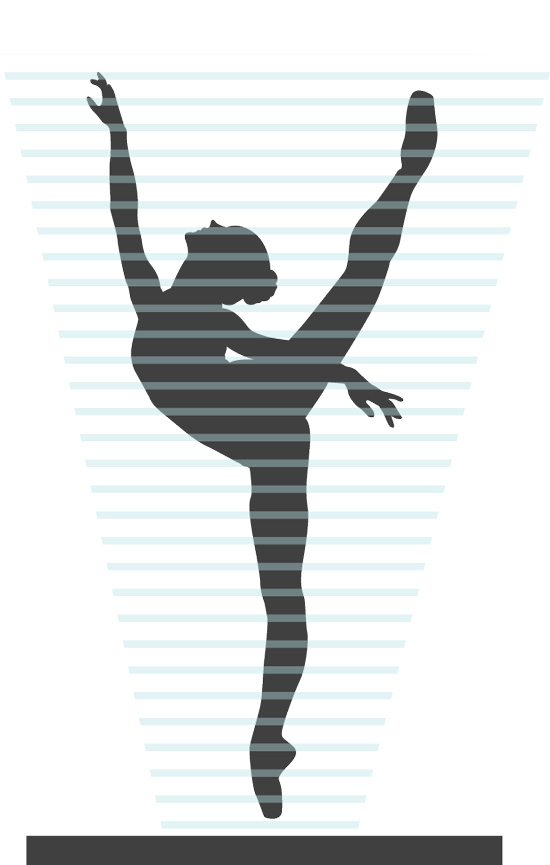
Innovate the teaching of dance by developing life-size volumetric display that will enable a dance student to literally step inside the dance master’s body that through the use of immersive and responsive motion capture data, will identify and respond to collisions between the physical and virtual bodies.
WhoLoDancE disrupts the conventional mode of communication in teaching (my body to your body/your body to my body – in other words – the learning body trying to be a different body), in favour of a doubling or a parsing of a single body – bringing into being a technology that encourages more autonomy in the learner, not making the teacher redundant but enriching the learning process because both will be engaged in a discovery of new information and of its contribution to developing a skilled and expressive dancer.
An immersive projection system (either holographic display of other volume-based projection like Fog screen or Ionized air projections) are used to project in the volume, the avatar moving in the space according to the motion capture data of the dance teacher.
The student that needs to learn and practice specific dance moves and routines, is positioned inside the same volume, while the scale of the avatar can be tuned so that at the start of the game, the student is fully immersed inside the virtual body of the avatar.
When the game begins, the goal of the student is to execute the dance moves that the avatar does without intersecting with the avatar, thus “staying inside the virtual body. When an intersection occurs and the physical body part is outside the enveloped avatar, there is immediate feedback, through spatial sound and vision, immediately alerting the student and suggesting the right correction.
Immersive audio will be based on a spatial distribution of loudspeakers, with coding based on vector-based amplitude panning or ambisonics to give audio feedback to the learner. Interactive sonification techniques will be developed to integrate into the whole multimodal feedback. In addition, Biometrics sensors will also be tested as feedback providers.
WhoLoDancE will attempt to create a fundamental impact on interference patterns based on holography. The proposed dynamic hologram will be projected with high resolution, better image quality, full colour and a very wide angle viewing frustum compared to what is already available in the market. The proposed reconstructed hologram will be within the user’s touching reach and will remain in the same coordinates, independent of the viewer’s location.
The idea of the looped avatar and the avatar that can be slowed down will allow the learner to see more in the movement, possibly striving for ‘accuracy’ – but it also allows the learner to ‘see’ the movement differently. Something slowed takes on a different character/quality/resonance – this helps the student (and the teacher) to find more in her own movement range.
Perhaps the most valuable strategic impact of WhoLoDancE is that once completed, it will offer a standardized platform to enable using the same educational real-time paradigm for learning other skills that are motion driven and require people to learn specific functional movement. This bears applications in ergonomics, engineering, robotics, architecture, medical and other motion-based performing sectors.
